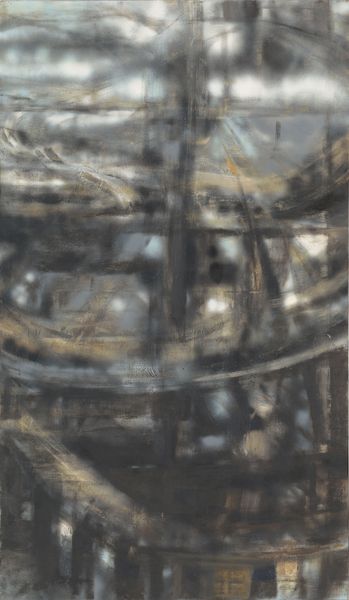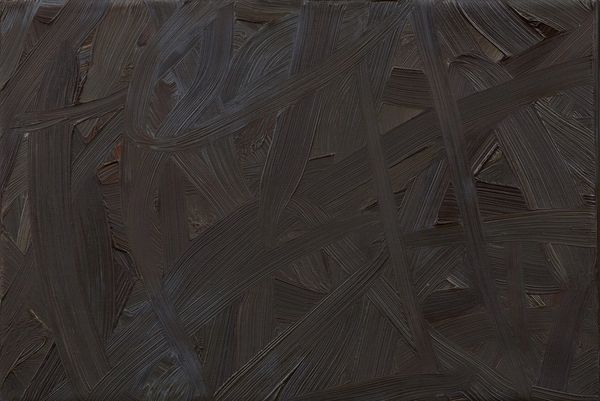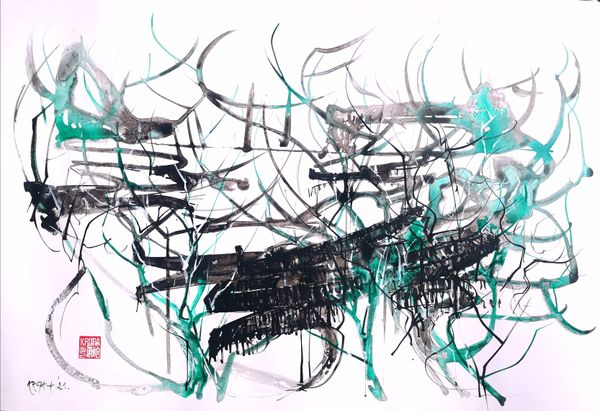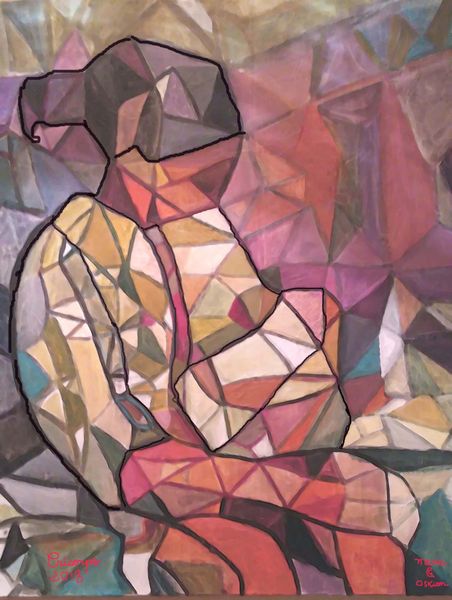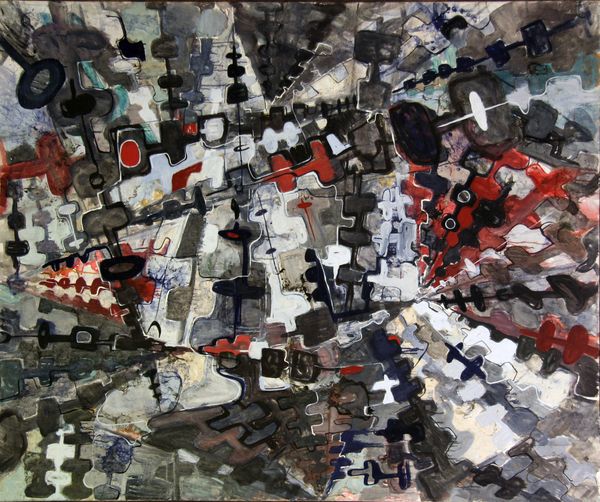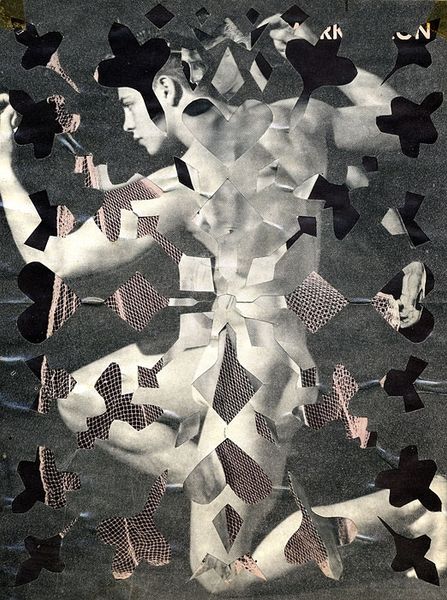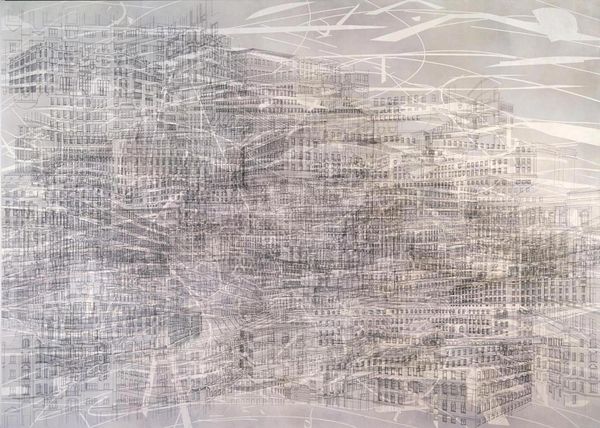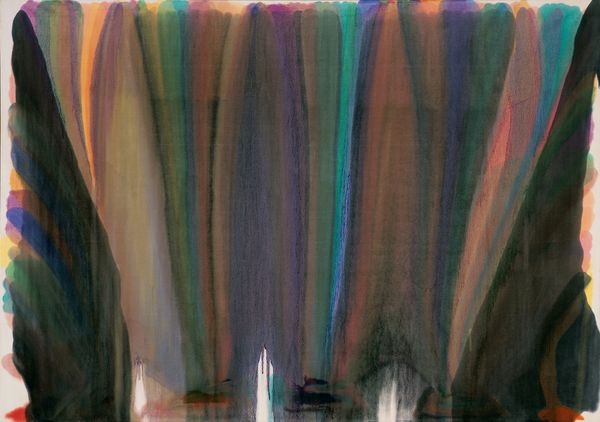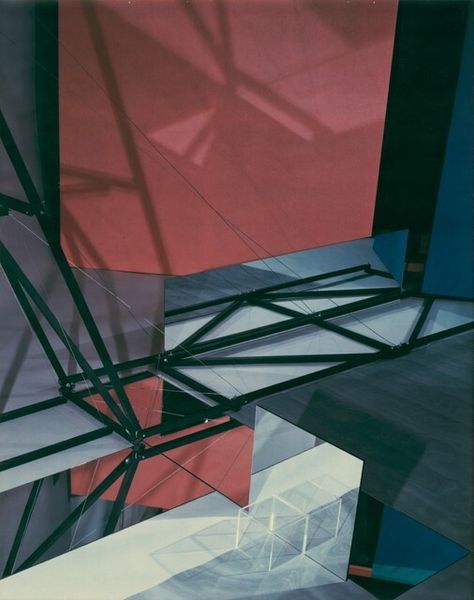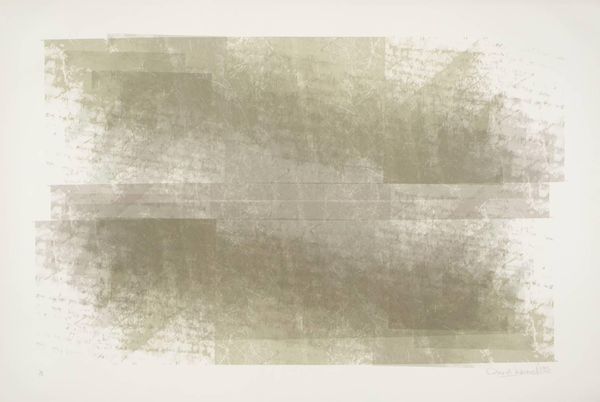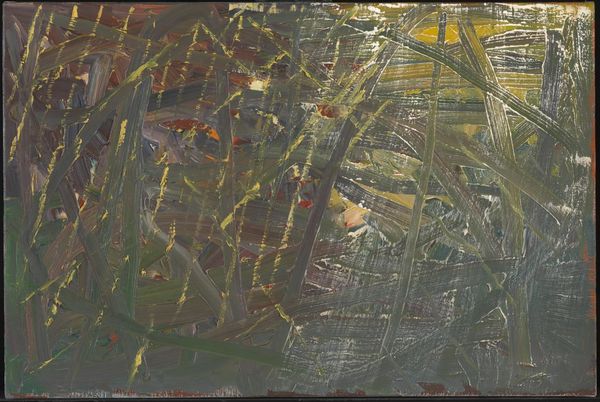
Dimensions: support: 648 x 911 mm
Copyright: © ADAGP, Paris and DACS, London 2014 | CC-BY-NC-ND 4.0 DEED, Photo: Tate
Editor: This is Maria Helena Vieira da Silva's "The Corridor," currently residing at the Tate Modern. It looks like a watercolor painting, and I immediately feel a sense of disorientation. What's your take on this perspective? Curator: It's compelling how Vieira da Silva uses geometric forms to evoke a sense of unease, isn't it? Considering the historical context, post-war anxieties might be reflected in this fragmented representation of space. How do you think the public might have interpreted this distortion of perspective in its time? Editor: I guess maybe a feeling of instability? As if the familiar is no longer solid. Curator: Precisely. And that feeling, particularly after the war, speaks volumes about the role of art in reflecting societal shifts. Editor: I hadn't thought about it that way, seeing how the art reflects broader social anxieties and questions about our world. Curator: Understanding the interplay between art and its historical context helps us grasp its deeper meaning and enduring relevance.
Comments
tatemodern 8 months ago
⋮
http://www.tate.org.uk/art/artworks/vieira-da-silva-the-corridor-n06189
Join the conversation
Join millions of artists and users on Artera today and experience the ultimate creative platform.
tatemodern 8 months ago
⋮
Vieira da Silva was a key figure within the field of expressive abstraction in post-war Paris. However her work always retained a strong basis of reference to the visible world. Many of her paintings depict labyrinthine interior spaces, with complex or multiple lines of perspective. The elaborate mosaic and tiled surfaces recall the domestic architecture of her native Portugal. This picture was first exhibited in 1950 as The Corridor, but later became known as The Grey Room. Gallery label, July 2012
